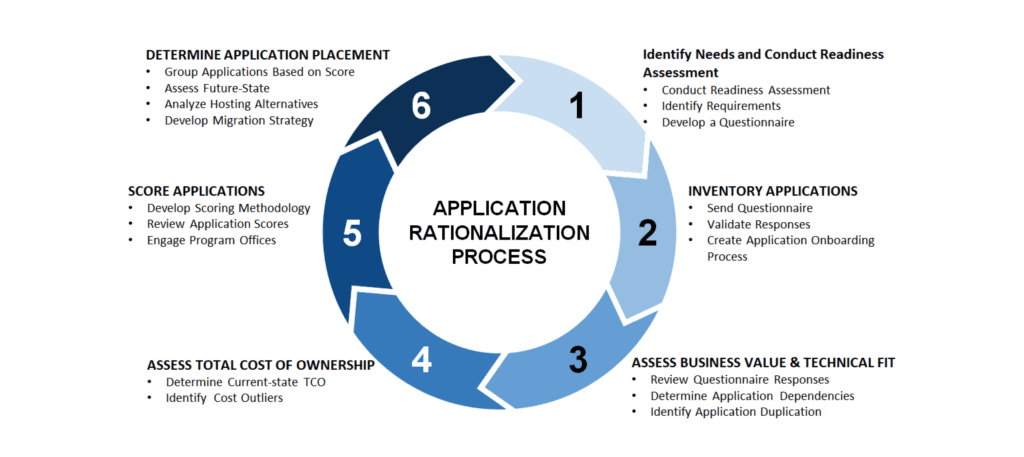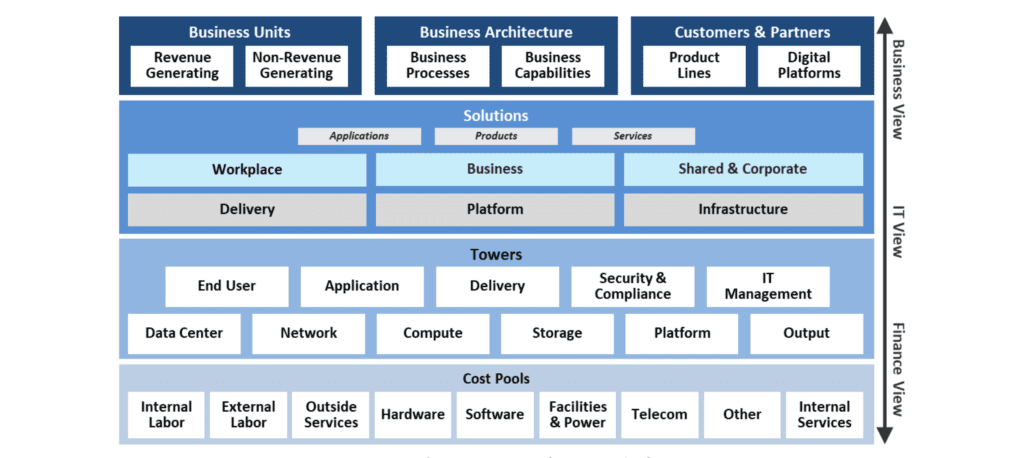Have you ever attempted to explain just how much the IT team does for the organization, only to have it backfire with, “Wow! You have way too many applications. You need to get that number down.”? Then you know exactly how big of a challenge this is.
The CIO is in a tough spot – IT systems are tools in the company’s toolbox, but that toolbox needs a different wrench for each size bolt in the organization and no one wants to go through the hassle of changing bolts. After all, IT cost control is the CIO’s problem. But, few CIOs have the authority to make decisions on changing other divisions’ business processes.
A mistake commonly made is to overthink the problem with a variety of steps and subprocesses. The CIO Council’s Application Rationalization Playbook is a comprehensive, yet expensive example of this approach.

This is where the black hole begins to draw you in. First, you realize you don’t have a good list of applications, your CMDB is fragmented and incomplete, and you’re not sure who all the owners are. You spend months collecting data and creating inventories, more months on value and technical fit scoring, and even more months arguing over cost allocation methodology! Once you get through all of that, you end up with a comprehensive assessment of the company’s software… only to struggle to find anyone willing to give up their bolts. But they’re more than willing to challenge your numbers! Which sends you deeper into the black hole in search of making the information more accurate.
Avoid the black hole by adopting an agile MVP (Pareto 80/20) – a no-nonsense approach that can be accomplished in three steps.
Step 1 – Follow the money.
You can make big progress without great data or a comprehensive inventory and analysis of the application. Simply look at where most of your team’s effort is being spent! This can be as simple as having each manager ask their team what the top three activities or systems they spend their time on every month. Labor is the largest expense for most CIOs – you can quickly learn where the labor is being spent just by asking.
As for the rest of the costs, I highly recommend the Technology Business Management Council’s TBM Taxonomy Standard (partially because I helped co-authored earlier versions). When it comes to cost allocation, a rough order of magnitude is enough. Don’t go into the black hole of seeking perfection. This is an area of identification where experience can make a huge impact on efficiency; hiring an experienced partner can save time and money.

Step 2 – Compare cost to business value.
The technologies you manage are making and saving the business money – and you want more of this! Focus on value, specifically the value vs the cost, not the quantity. Don’t fall into the black hole of hard quantifying the business benefit of a bolt. A simple leadership judgement is sufficient.
A line of business leader can look at the list and say, “Wrench #1 is scared, it’s the center of everything we can do, but wrench #2 seems way too expensive for the number of bolts we have.” If your business partner is unwilling to reduce their tech needs, let them know their department is one of the most expensive to support in the whole company. Show them where the money is going. Consider engaging a partner to assist you in telling the story of IT (we know the reports and visualizations that the CFO and CEO will appreciate).
Step 3 – Take all the action but give away all the credit.
You will get more support from division leaders if you let them take credit for the savings… but don’t expect them to absorb the cost and workload needed to change those bolts. IT needs to lead the effort of identifying how applications can be reduced. Get business involvement but don’t push them toward the black hole by giving them overburdensome forms, assignments, and data gathering tasks.
Once a joint plan is established, put it in motion. That looks like initiating a capital project, adding initiatives to business plans, or adding goals and actions to performance reviews. Whatever the engine is in your organization that gets things done, use it!
TL;DR
- Follow the money. Identify where your team spends the most time and labor; what other costs do those items incur (licenses, hardware, cloud)? Report total cost of ownership (TCO) for the largest supported systems by line of business department.
- Compare cost to business value. Discuss the TCO report with division leaders and get their input on the value the technology provides. Then, agree on what to produce.
- Take all the action but give away all the credit. Create a plan and approach for each system to reduce. Then, get business support for the plan. Finally, manage, track, and report progress and benefits.
Need help putting this into motion? Let Paradigm help!
 By Phil Zeringue, Chief Innovation Officer
By Phil Zeringue, Chief Innovation Officer
